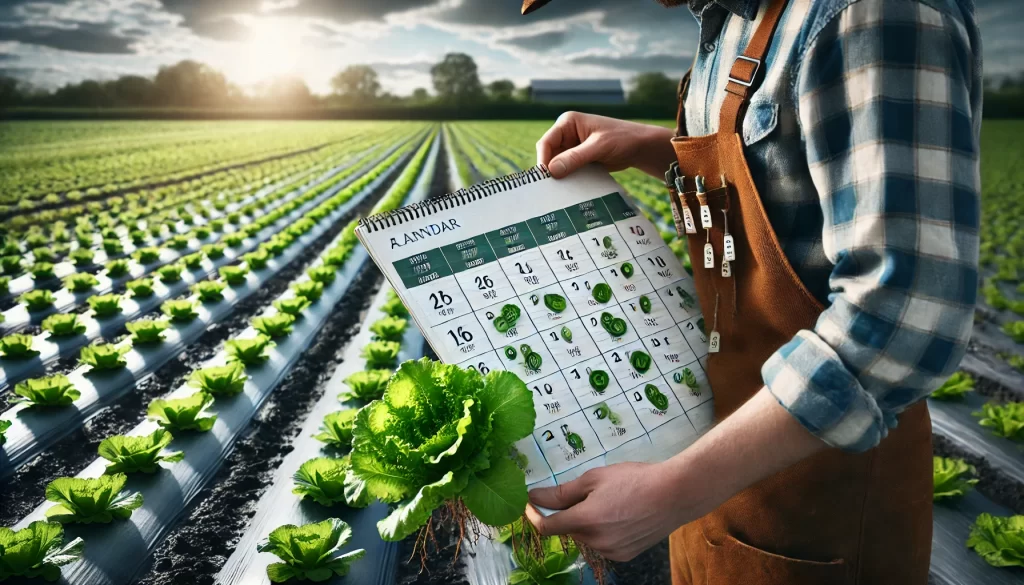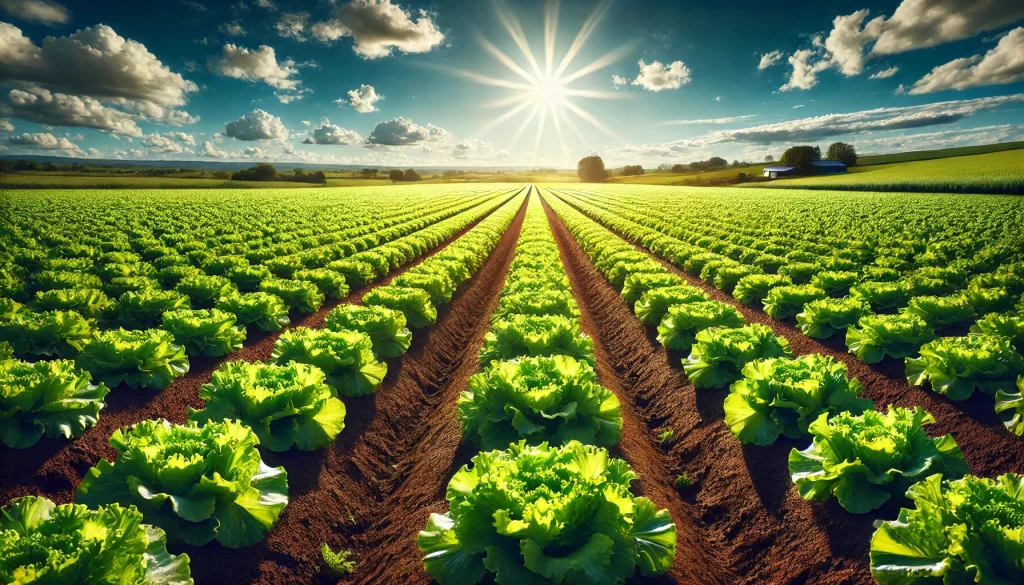Planning lettuce planting according to the region is crucial for achieving successful and healthy crops. This planting calendar provides practical, technical guidance and tips tailored to different climate zones, helping both beginners and experienced farmers optimize their planting times and care for lettuce.

Importance of the Planting Calendar
The lettuce planting calendar considers factors such as temperature, day length, and soil conditions, which are essential to ensure optimal plant germination and growth. Adapting planting to the regional climate prevents losses, improves productivity, and ensures a constant supply of fresh lettuce year-round.
Factors to Consider by Region
1. Climate and Temperature
- Temperate Regions: Lettuce grows best in cool climates. It can be planted in spring and autumn, avoiding the high temperatures of summer.
- Warm Regions: In warm climates, planting is preferred in autumn and winter, when temperatures are lower, or using shading and irrigation techniques to protect the crop.
2. Soil Type and Preparation
- Soil Analysis: Conduct analysis to adjust pH (ideal between 6.0 and 6.5) and nutrients.
- Amendments: Add compost and organic matter to improve moisture retention and soil structure.

Planting Calendar by Seasons
Below is a general calendar adaptable to various regions. This calendar should be adjusted according to specific local conditions:
| Season | Ideal Temperature | Key Activities | Recommended Varieties |
|---|---|---|---|
| Spring | 10°C – 20°C | Direct soil planting or transplanting seedlings | Curly Lettuce, Butterhead |
| Summer | 15°C – 25°C | Greenhouse cultivation, constant irrigation | Romaine Lettuce, heat-resistant varieties |
| Autumn | 10°C – 20°C | Open field planting, soil preparation | Curly Lettuce, Romaine |
| Winter | 5°C – 15°C | Greenhouse cultivation, use of mulching | Butterhead Lettuce, cold-tolerant varieties |
Grow Lush Greens with Sereniseed!
Discover the Certified Organic Green Leaf Lettuce Seed Collection by Sereniseed. This 10-variety pack features Green Towers Romaine, Winter Density, Dark Lolla Rossa, Black Seeded Simpson, and more, perfect for fresh salads and healthy meals. 100% organic, non-GMO, and includes a handy growing guide.
Buy Now and Start Growing! AgronoBlog – Agriculture Blog
AgronoBlog – Agriculture Blog 


